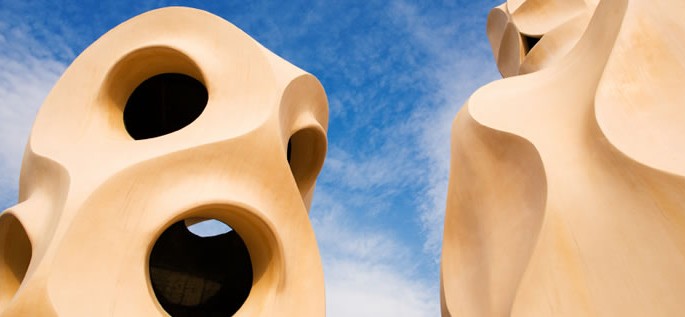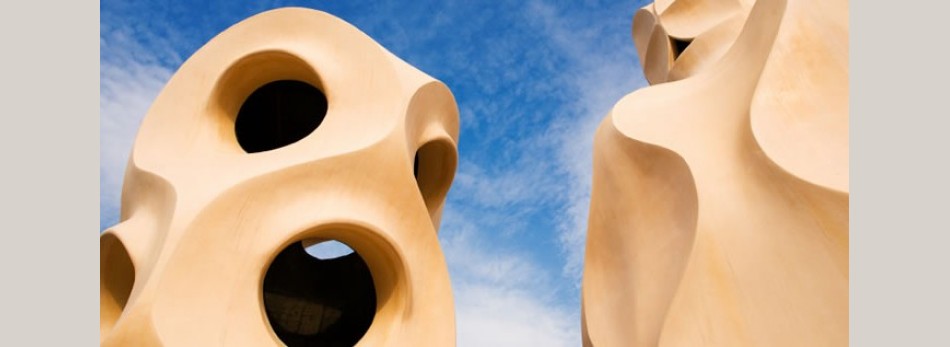Catalan

Catalan, also known as Catala, Catalan-Valencian-Balear, Catalonian, belongs to the Romance branch of the Indo-European language family. It is spoken by 6.9 million people in Spain with a total world population of 7.2 million people. In addition, there are 5 million second-language speakers of Catalan. In Spain Catalan is spoken in the Barcelona area, Catalonia, Valencia provinces, Balearic Islands, Carche region, and Murcia Province. Itt is also spoken in Algeria, Andorra, Argentina, Belgium, Brazil, Chile, Colombia, Cuba, Dominican Republic, France, Germany, Italy, Mexico, Switzerland, United States, Uruguay, and Venezuela (Ethnologue).
Catalan first appeared as a distinct language in the 10th-12th centuries. It developed from Vulgar Latin on both sides of the eastern Pyrenees mountains in the 13th century, and was exported to several regions of southern Spain, such as Barcelona and Valencia, and to the Balearic Islands and the Alghero region of Sardinia, Italy.
Catalan is an official regional language of Spain and Andorra, and the co-official language in Catalonia, the Balearic Islands, Valencia region of Spain, and in the Sardinian city of Alghero.
Catalan suffered several periods of prohibition and repression in the 18th century, but in the 19th century, during a period of economic, cultural and national renaissance, Catalan was reborn as the language of literary culture. The language was standardized through the publication of spelling rules in 1913, and a grammar in 1918. During the first 30 years of the 20th century, Catalonia recovered a degree of political power. During the Spanish Second Republic (1931-1939), Catalan was restored to its official language status, which it had lost in the 18th century. However, the Spanish Civil War put an end to Catalan’s resurgence and it was banned once again from public use. Following the death of Franco in 1975 and the restoration of democracy, the ban was lifted, and Catalan is now an official regional language that is used in politics, education and the media.
Dialects
Catalan is usually divided into two major dialects that are broken into further regional varieties. The dialects are characterized primarily by differences in pronunciation and to some extent by vocabulary. For the most part, all dialects are mutually intelligible. The two major dialects are listed below. They are distinguished principally by differences in the vowels.
|
Western Catalan North-Western Catalan Transitional Valencian or Ebrenc Valencian |
Eastern Catalan Northern Catalan Central Catalan Balearic Alguerese |
Standard Catalan is based on Central Catalan as spoken by educated people in Barcelona.
Structure
The sound system of Catalan shares many features with neighboring Romance languages such as French, Italian, Portuguese, Sardinian, and Spanish.
Vowels
Catalan has 7 vowel phonemes, i.e., sounds that make a difference in word meaning. In addition, Catalan has several diphthongs. Compared with Spanish, Catalan does not have the rising diphthongs , e.g., ie and ue, but has a large number of falling diphthongs, e.g., eu, au, ou.
|
Front
|
Central
|
Back
|
|
|---|---|---|---|
|
Close
|
i
|
u
|
|
|
Close-mid
|
e
|
o
|
|
| Open-mid |
ɛ
|
ɔ
|
|
|
Open
|
a
|
- /i/ in beet
- /e/ in bait
- /ɛ/ in bet
- /u/ in boot
- /o/ in boat
- /ɔ/ in bog
Consonants
Catalan has an inventory of 23 consonant phonemes. The phonemic status of bracketed consonants is a matter of dispute due to dialectal differences.
|
Bilabial
|
Labio-
dental |
Denti-alveolar
|
Palatal
|
Velar
|
||
|---|---|---|---|---|---|---|
| Stops | voiceless |
p
|
t
|
(c)~k
|
||
| voiced |
b
|
d
|
(ɟ)~g
|
|||
| Fricatives | voiceless |
f
|
s
|
ʃ
|
||
| voiced |
(v)
|
z
|
ʒ
|
|||
| Affricates | voiceless |
ts
|
tʃ
|
|||
| voiced |
dz
|
dʒ
|
||||
| Nasals |
m
|
n
|
ɲ
|
ŋ
|
||
| Laterals |
l
|
ʎ
|
||||
| Trill |
r
|
|||||
| Flap |
ɾ
|
|||||
| Approximants |
w
|
j
|
||||
- /p, t, k/ are not aspirated, i.e., they are produced without a puff of air, as in English.
- Voiced stops, fricatives, and affricates are devoiced in final position.
- /ç, ɟ/ have no equivalents in English
- /ʃ/ = sh in sheep
- /ʒ/ = s in treasure
- /tʃ/ = ch in cheap
- /dʒ/ = j in jeer
- /ɲ/ = first n in canyon
- /ŋ/ = ng in song
- /ʎ/ = ll in million
Stress
Stress normally falls on the penultimate syllable if the word ends in a vowel, vowel + s, or –en; otherwise if falls on the final syllable.
The grammar of Catalan has many similarities to the grammar of Spanish.
Nouns, articles, adjectives, and pronouns
Catalan nouns have the following features:
- There are two genders: masculine and feminine.
- There are two numbers: singular and plural. The plural is formed by adding -s to the singular form.
- There are no case inflections.
- Articles and adjectives agree with the nouns they modify in gender and number, e.g., el meu pare ‘my father’ (masculine singular); la meva mare‘ my mother’ (feminine singular); un gat ‘a male cat’; una gata ‘a female cat’.
Pronouns
The pronominal system of Catalan is quite complicated. Below are a few of its features:
- Catalan makes a distinction between informal and formal second person pronouns tu (informal ‘you’) and Vostè (formal ‘you’), much like Spanish, Portuguese, and Italian.
- Personal pronouns can take several forms: full form, e.g., Creieu-me ‘believe me,’ reduced form, e.g., Deixa’m tranquil-la ‘Leave me in peace,’ emphatic form, e.g., Em van donar un premi ‘They gave me an award.’
- The rules for combining pronouns are complicated, e.g., Dòna-l’hi. (li + el = l’hi) ‘Give it to him’.
Verbs
The verb system of Catalan is characterized by the following features:
- Verbs agree with their subjects in person (1st, 2nd, 3rd) and number (singular, plural).
- Subject pronouns can be dropped since the verb endings carry information about person and number, e.g., Jo t’estimo or T’estimo ‘(I) love you’.
- There are three regular conjugations and some 150 irregular verbs.
- There are four simple tenses ( present, past, imperfect, and future).
- Compound tenses are formed with the auxiliary verb haver ‘to have’ + the past passive participle.
- There are five moods: indicative, subjunctive, imperative, and conditional.
- There are two voices: active and passive which is formed with the auxiliary esser ‘ to be’ + the past passive participle.
- Reflexive verbs are similar to those in Spanish, e.g., Em rento ‘I wash myself,’ M’he rentat ‘I have washed myself,’ Renta’t! ‘Wash yourself!’
Word order
The neutral word order in Catalan is Subject-Verb-Object. Other word orders are possible to indicate topic (what the sentence is about, or old information) and focus (new information), as well as emphasis.
Catalan shares most of its vocabulary with other Romance languages. Below are a few common Catalan phrases and words.
| Hello | Hola |
| Good bye | Adéu |
| Please | Si us plau |
| Thank you | Gràcies, mèrces |
| Excuse me, pardon me | Disculpeme, perdoni |
| Yes | Si |
| No | No |
| Man | L’home |
| Woman | La dona |
Below are the numerals 1-10 in Catalan.
|
1
|
2
|
3
|
4
|
5
|
6
|
7
|
8
|
9
|
10
|
|---|---|---|---|---|---|---|---|---|---|
|
un
|
dos
|
tres
|
quatre
|
cinc
|
sis
|
set
|
vuit
|
nou
|
deu
|
Writing
Catalan began to appear in written documents during the 12th century. It was standardized through the publication of spelling rules in 1913, and of a grammar in 1918. Standard literary incorporates features of several dialects but is largely based on the Central Catalan dialect as spoken by educated people in Barcelona.
Catalan alphabet consists of 26 letters. Click here to see correspondence between letters and sounds they represent.
|
A a
|
B b
|
C c
|
Ç ç
|
D d
|
E e
|
F f
|
G g
|
H h
|
Ii
|
Jj
|
Kk
|
L l
|
M m
|
|
N n
|
O o
|
P p
|
Q q
|
R r
|
S s
|
T t
|
U u
|
V v
|
W w
|
X x
|
Y y
|
Z z
|
Catalan orthography uses the following conventions:
- acute and grave accents over vowels, e.g., À, É, È, Í, Ó, Ò, Ú.
- diaeresis, a diacritic consisting of two dots over a vowel, to indicate it is to be pronounced as a full vowel and not as part of a diphthong, e.g., Ï.
- k, w, y are used exclusively in loan words and foreign names.
Take a look at Article 1 of the Universal Declaration of Human Rights in Catalan.
|
Declaraciò Universal de Drets Humans Tots els éssers humans neixen lliures i iguals en dignitat i en drets. Són dotats de raó i de consciència, i han de comportar-se fraternalment else uns amb els altres. |
|
Universal Declaration of Human Rights All human beings are born free and equal in dignity and rights. They are endowed with reason and conscience and should act towards one another in a spirit of brotherhood. |







